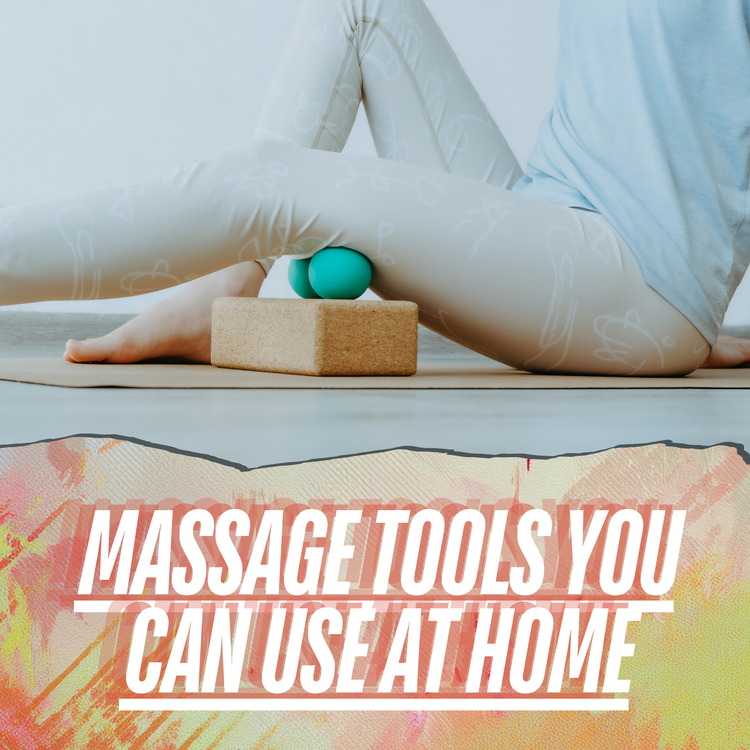How to Use Home Massage Tools for Home Workout Recovery

In the world of home workouts, recovery is just as important as the exercises themselves. Ensuring that your body can recover after exercising helps prevent injuries and enhances performance over time. This is where massage tools come into play. They are designed to aid in muscle recovery by reducing soreness and improving circulation. In this guide, we'll dive into the various types of massage tools, such as hand massagers, foot rollers, and massage roller balls, and explore how they can enhance your home workout recovery routine.
Benefits of Using Massage Tools
Massage therapy is widely recognized for its numerous health benefits. According to the Mayo Clinic Health System, regular massage can help reduce stress, manage pain, and improve overall well-being. Here’s how massage tools can help with these benefits:
- Pain Relief: Massage tools can target specific areas of pain, offering relief from muscle tension and soreness.
- Improved Circulation: By stimulating blood flow, these tools help deliver nutrients to muscles, speeding up recovery.
- Stress Reduction: Regular use of massage tools can help lower stress levels, promoting relaxation and mental clarity.
- Flexibility and Range of Motion: Massaging muscles can increase flexibility, making it easier to perform exercises with proper form.
Incorporating massage tools into your routine can not only enhance your recovery but also improve your overall fitness journey by keeping your muscles healthy and ready for the next workout.
History and Evolution of Massage Tools
Massage therapy has been a part of human history for thousands of years, evolving from simple hands-on techniques to advanced tools designed to enhance the experience. Originally, massage was practiced as a hands-only technique in ancient civilizations, including China, Egypt, and Greece, where it was used for healing and relaxation.
Over time, as our understanding of the body and its needs grew, so did the tools used in massage therapy. Early tools were simple, often made from natural materials like wood and stone. Today, massage tools are crafted with advanced materials and technology, offering targeted relief and convenience for home use. For a deeper dive into the history of massage therapy, you can explore the History of Massage Therapy.
Understanding Different Massage Tools
Here are some popular types of massage tools that can enhance your recovery routine:
Hand Massager
A hand massager is specifically designed to target the muscles in your hands and wrists. It's very helpful for those who spend long hours typing or using their hands repetitively. By stimulating blood flow and reducing tension, a hand massager can help prevent conditions like carpal tunnel syndrome and arthritis.
Foot Roller
The foot roller is perfect for those who have foot pain or discomfort. By rolling your feet over this tool, you can relieve tension and improve circulation. It's especially useful for runners or individuals who spend a lot of time on their feet. Check out our foam rollers for more options.
Massage Roller Ball
The massage roller ball is a tool that helps with muscle pain. It's compact and easy to use on various muscle groups, such as the back, shoulders, and legs. Simply apply pressure and roll the ball over tense areas to enjoy deep tissue relief.
Ergonomic Design and Effectiveness
When it comes to massage tools, their ergonomic design plays a crucial role in how effective they are in aiding recovery. Ergonomically designed tools are made to fit easily in your hands and align with the natural contours of your body. This thoughtful design ensures that you can apply the necessary pressure without straining your muscles or joints.
Here’s why ergonomic design matters:
- Comfort and Ease of Use: Tools that are easy to handle encourage regular use, making it more likely that you'll stick to your recovery routine.
- Improved Targeting: Ergonomically shaped tools allow for better targeting of specific muscle groups, enhancing the effectiveness of your recovery efforts.
- Reduced Risk of Injury: Properly designed tools minimize the risk of overexertion or improper use, which can lead to injury.
For more insights on how design impacts the effectiveness of massage tools, check out the article on Instrument Assisted Soft Tissue Mobilization - Physiopedia.
Tips for Incorporating Massage Tools into Your Routine
Using massage tools in your workout recovery can make a big difference. Here are some practical tips to help you make the most out of these tools:
- Start Slow: If you're new to using massage tools, begin with gentle pressure and gradually increase as your body gets accustomed.
- Focus on Key Areas: Pay special attention to areas that tend to get sore or tight, like your calves, back, and shoulders.
- Consistency is Key: Aim to use your massage tools regularly, ideally after each workout session, to prevent muscle stiffness and promote faster recovery.
- Use Proper Techniques: Follow recommended techniques for each tool. For instance, roll slowly with a foot roller to enhance circulation or apply steady pressure with a massage roller ball for deep muscle relief.
- Listen to Your Body: If you experience any pain beyond mild discomfort, stop and reassess your technique or pressure level.
Incorporating these tools into your routine not only enhances recovery but also adds a relaxing element to your fitness regimen. Remember, a well-recovered body is more prepared for the next workout challenge!
Summary and Explore Our Products
Massage tools are key to improving your recovery process. With ergonomic designs that cater to different needs, these tools ensure you get the most out of each session. Start with a few simple techniques and gradually find what works best for you.
At Living.Fit, we understand the importance of a well-rounded fitness routine. That's why we offer a range of products such as resistance bands and digital workouts to complement your recovery efforts. Explore our collection and discover how our products can support your fitness journey. Visit our website to learn more about our offerings and how they can fit into your lifestyle.




